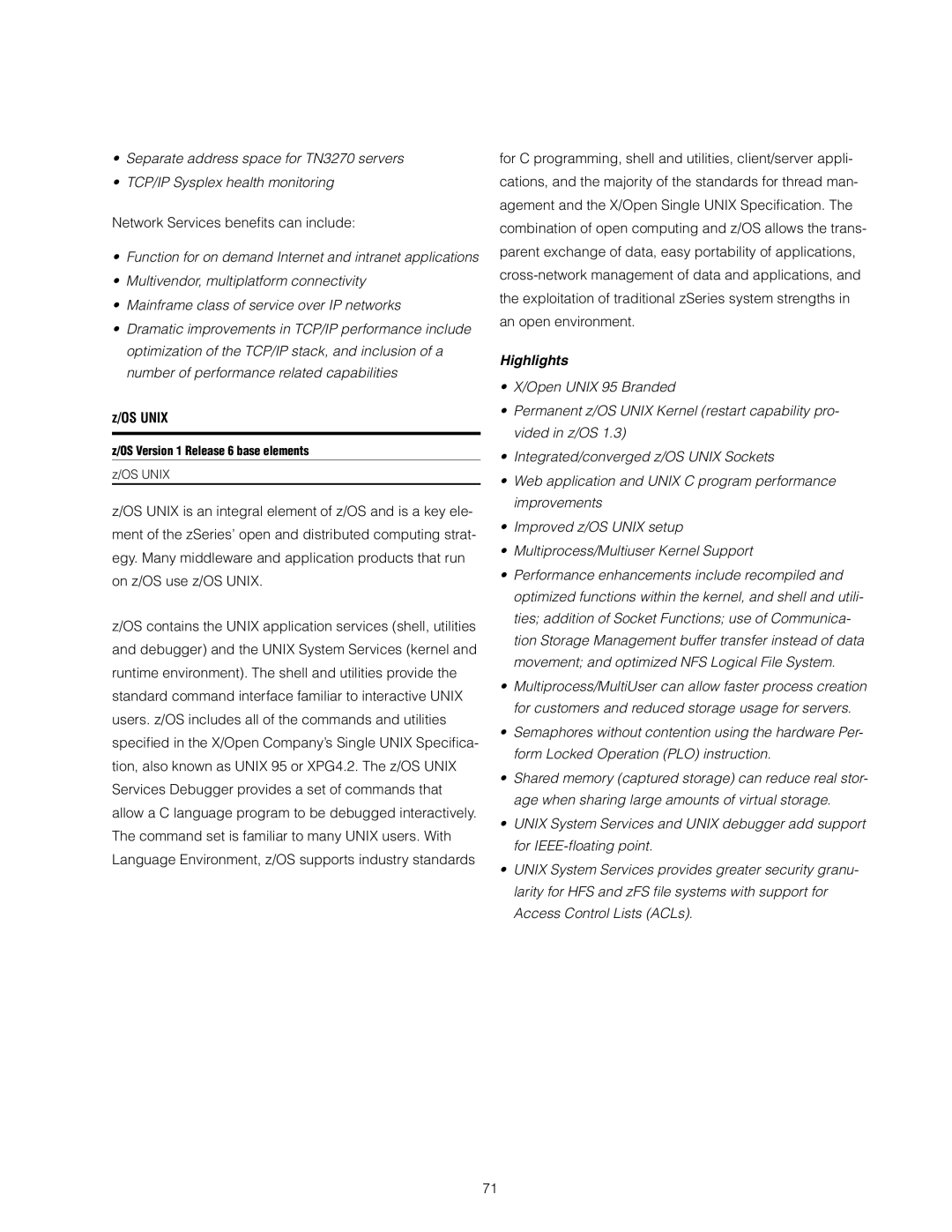•Separate address space for TN3270 servers
•TCP/IP Sysplex health monitoring
Network Services benefi ts can include:
•Function for on demand Internet and intranet applications
•Multivendor, multiplatform connectivity
•Mainframe class of service over IP networks
•Dramatic improvements in TCP/IP performance include optimization of the TCP/IP stack, and inclusion of a number of performance related capabilities
z/OS UNIX
z/OS Version 1 Release 6 base elements
z/OS UNIX
z/OS UNIX is an integral element of z/OS and is a key ele- ment of the zSeries’ open and distributed computing strat- egy. Many middleware and application products that run on z/OS use z/OS UNIX.
z/OS contains the UNIX application services (shell, utilities and debugger) and the UNIX System Services (kernel and runtime environment). The shell and utilities provide the standard command interface familiar to interactive UNIX users. z/OS includes all of the commands and utilities specifi ed in the X/Open Company’s Single UNIX Specifi ca- tion, also known as UNIX 95 or XPG4.2. The z/OS UNIX Services Debugger provides a set of commands that allow a C language program to be debugged interactively. The command set is familiar to many UNIX users. With Language Environment, z/OS supports industry standards
for C programming, shell and utilities, client/server appli- cations, and the majority of the standards for thread man- agement and the X/Open Single UNIX Specifi cation. The combination of open computing and z/OS allows the trans- parent exchange of data, easy portability of applications,
Highlights
•X/Open UNIX 95 Branded
•Permanent z/OS UNIX Kernel (restart capability pro- vided in z/OS 1.3)
•Integrated/converged z/OS UNIX Sockets
•Web application and UNIX C program performance improvements
•Improved z/OS UNIX setup
•Multiprocess/Multiuser Kernel Support
•Performance enhancements include recompiled and optimized functions within the kernel, and shell and utili- ties; addition of Socket Functions; use of Communica- tion Storage Management buffer transfer instead of data movement; and optimized NFS Logical File System.
•Multiprocess/MultiUser can allow faster process creation for customers and reduced storage usage for servers.
•Semaphores without contention using the hardware Per- form Locked Operation (PLO) instruction.
•Shared memory (captured storage) can reduce real stor- age when sharing large amounts of virtual storage.
•UNIX System Services and UNIX debugger add support for
•UNIX System Services provides greater security granu- larity for HFS and zFS fi le systems with support for Access Control Lists (ACLs).
71
